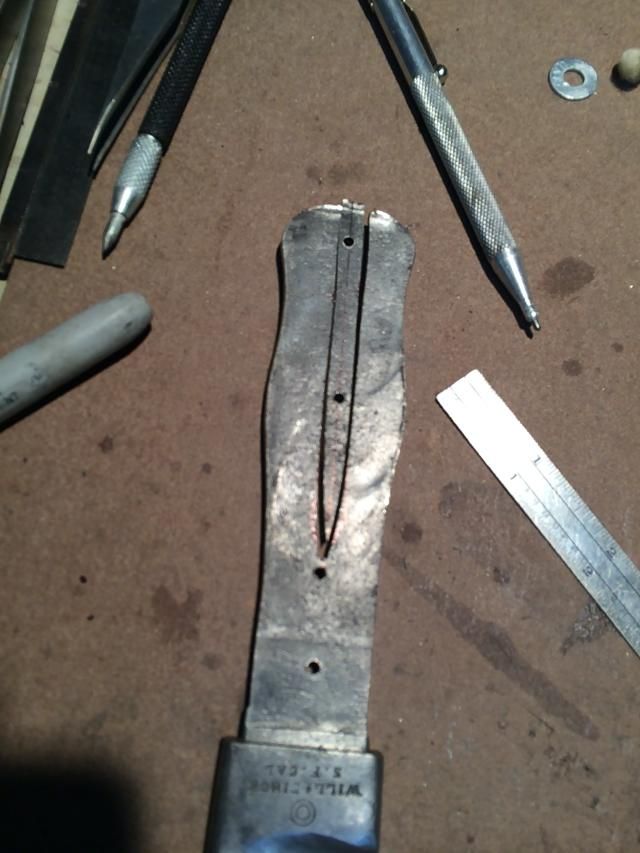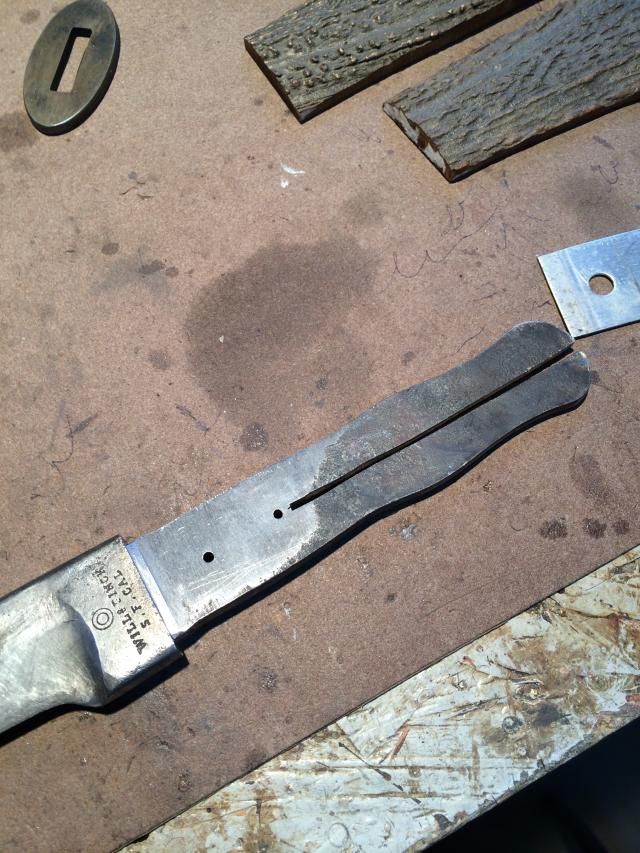Back in November I was at a neighbors place visiting and we got to talking knives. He starts telling me about a knife he had inherited many year ago from a local character name of Happy Jack Aldrich and asked me about refurbishing it.
I know you guys get the same thing but not often they hand you something like this. It about blew my mind when he pulled this Will&Fink of old San Fransisco fame out of the beat up sheath and then blew it again when he told the story. This guy is 71 years old and says he got the knife off an old Mountain Man 50 odd years ago who was living out his years on their property. Happy Jack was in MT in the 1800s back when they were still fighting the Indians. Supposedly he snuck up on a Blackfoot down on the river and after a struggle cut his throat with this very knife. He then liberated the 66 Winchester the Blackfoot had and went on his way. My neighbor still has the Winchester which he inherited also. Maybe yes, maybe no, but makes quite a story anyway...
After some research we figured out in the condition it was in the actual value of the knife was minimal, so I agreed to take on the project and try to restore it to some semblance of it's original look. It had a pretty tough looking elk horn scale on one side hanging by one pin that I took off and no sign of the guard. The “new” owner hadn't used it, so it is "original" from Happy Jack. Worn as it is, surprisingly the blade bevel is very good and it's even still sharp.

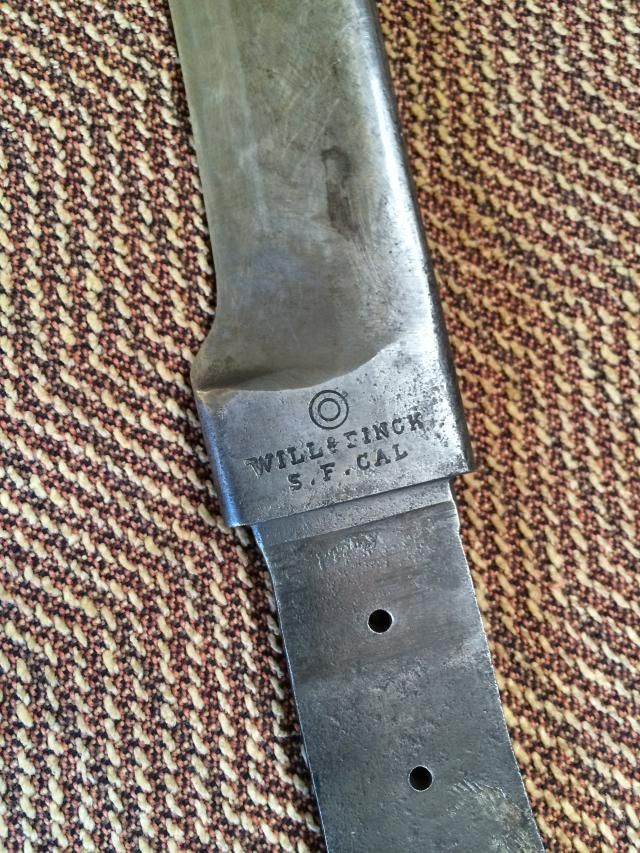
Due to the pin hole configuration and bevels on the tang it was obvious there were multiple pieces of scale material. I talked to Mark Zalesky of Knife World Magazine and picked his brain. We found a picture in the “Knife Makers of Old San Francisco” book of what we figured it looked like originally. It showed the typical oval guard, a metal bolster behind that and elk horn scales. One thing that intrigued me was the step down in the handle behind the guard and how they had gotten the guard over the wider parts of the tang. Mark's theory was they had fit the guard prior to forging the tang to finished width and taper. Looking at the forging marks in the tang, I'm certain he was right on that. Mark also told me many of these older knives had iron fittings which probably accounted for them being broken off and gone.
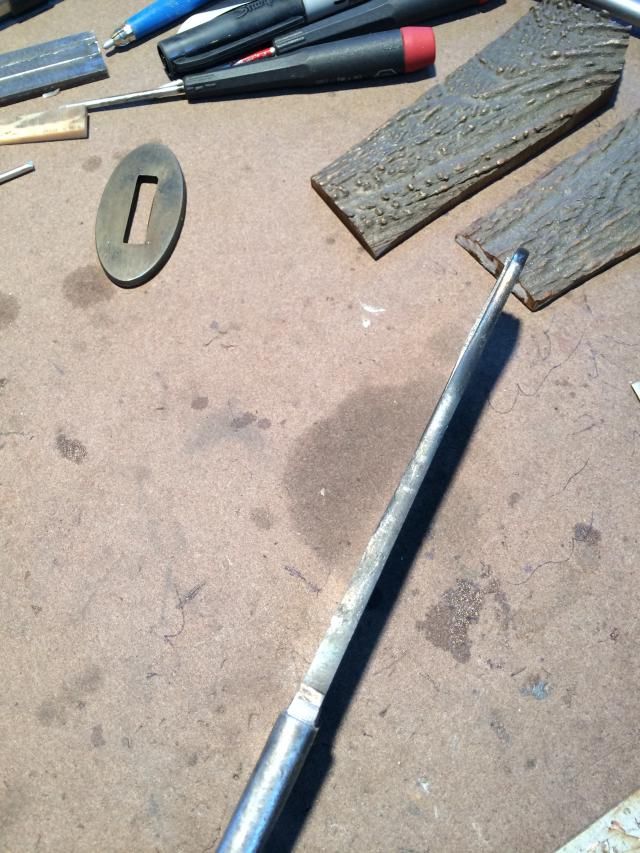
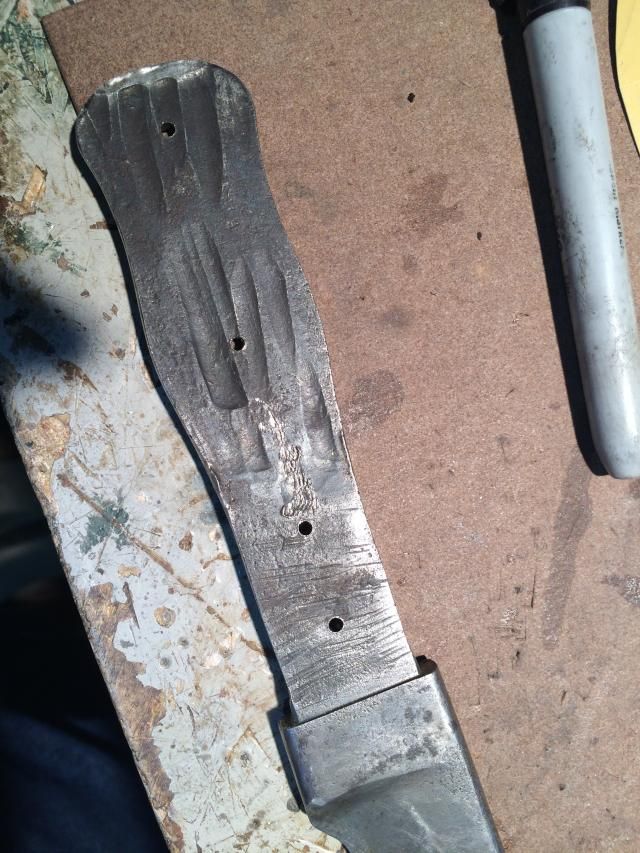
Forward to me working on the knife... I scratched my head a bit over how to get the new guard over the tang. I decided to cut a wedge out of the tang, forge the remaining material together and then fit the guard.
